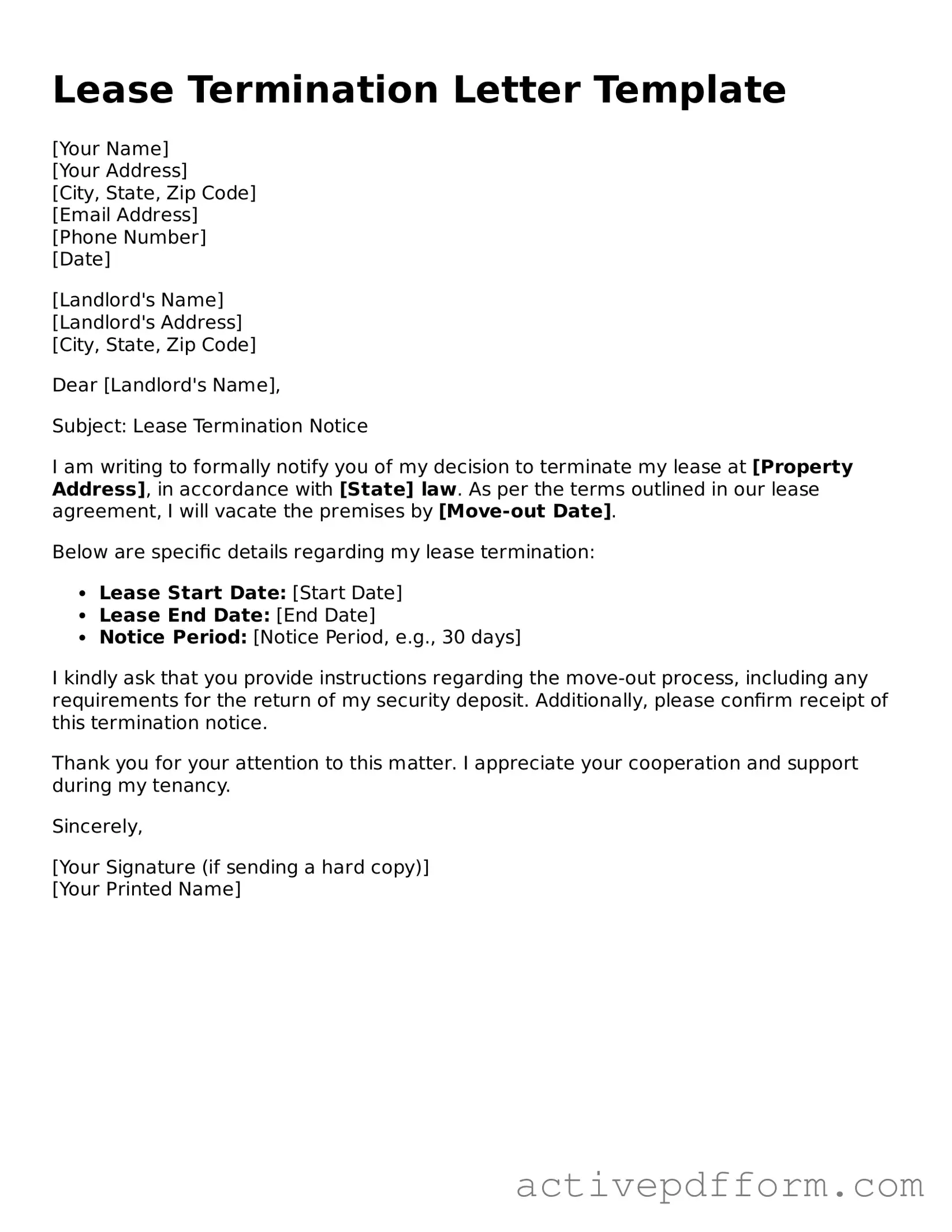What is a Lease Termination Letter?
A Lease Termination Letter is a formal document that notifies a landlord or tenant of the intention to end a lease agreement. It serves as a written record of the decision to terminate the lease and outlines important details such as the termination date and any relevant terms.
When should I use a Lease Termination Letter?
You should use a Lease Termination Letter when you decide to end your lease agreement, whether you are a tenant or a landlord. It is essential to provide notice in accordance with the terms of the lease and applicable laws. Timing is critical; ensure you send the letter well in advance of the lease expiration or the desired termination date.
What information should be included in the letter?
The letter should include your name and address, the landlord's or tenant's name and address, the date of the letter, the lease's termination date, and a statement expressing your intention to terminate the lease. Additionally, include any specific details required by the lease agreement, such as instructions for returning keys or handling the security deposit.
How much notice do I need to give?
The notice period required often depends on your lease agreement and local laws. Commonly, a 30-day notice is standard, but some leases may require more or less notice. Always check your lease for specific requirements to ensure compliance.
Can I email the Lease Termination Letter?
While emailing the letter may be convenient, it is best to send a printed, signed copy via certified mail or deliver it in person. This method provides proof of delivery and ensures that the landlord or tenant receives the notice formally.
What if my landlord or tenant does not respond?
If you do not receive a response after sending the Lease Termination Letter, it is wise to follow up with a phone call or another written communication. Keep records of all correspondence in case of future disputes. If the lease requires a response and none is received, consult local laws to determine your next steps.
What happens after I send the Lease Termination Letter?
After sending the letter, you should prepare for the next steps, such as moving out or arranging for the return of the security deposit. Ensure that you fulfill any obligations stated in the lease, such as cleaning the property or repairing damages. This preparation will help avoid disputes and ensure a smooth transition.
Is a Lease Termination Letter legally binding?
Yes, a Lease Termination Letter is a legally binding document when it complies with the terms of the lease and applicable laws. It serves as evidence of your intent to terminate the lease and can be used in legal proceedings if necessary. Always keep a copy for your records.
